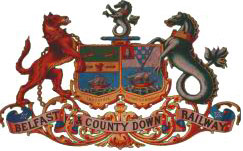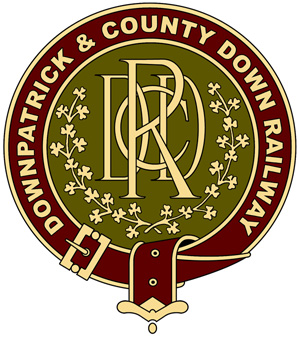
Downpatrick is a town in County Down, Northern Ireland. It is on the Lecale peninsula, about 21 mi (34 km) south of Belfast. In the Middle Ages, it was the capital of the Dál Fiatach, the main ruling dynasty of Ulaid. Its cathedral is said to be the burial place of Saint Patrick. Today, it is the county town of Down and the joint headquarters of Newry, Mourne and Down District Council. Downpatrick had a population of 10,822 according to the 2011 Census.
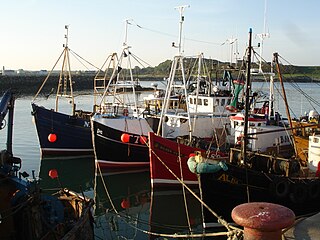
Ardglass is a coastal fishing village, townland and civil parish in County Down, Northern Ireland, in the historic barony of Lecale Lower. It is still a relatively important fishing harbour. It is situated on the B1 Ardglass to Downpatrick road, about 6 miles to the south east of Downpatrick, in the Lecale peninsula on the Irish Sea. It had a population of 1,668 in the 2001 Census, and is located within the Newry, Mourne and Down area.

Magnus III Olafsson, better known as Magnus Barefoot, was the King of Norway from 1093 until his death in 1103. His reign was marked by aggressive military campaigns and conquest, particularly in the Norse-dominated parts of the British Isles, where he extended his rule to the Kingdom of the Isles and Dublin.

Muircheartach Ua Briain, son of Toirdelbach Ua Briain and great-grandson of Brian Boru, was King of Munster and later self-declared High King of Ireland.
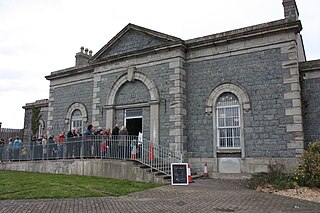
Downpatrick railway station was on the Belfast and County Down Railway, which ran its longest route from Belfast to Downpatrick in Northern Ireland. Today it is the headquarters of the Downpatrick and County Down Railway.
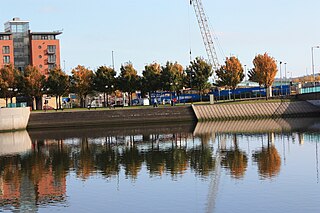
Queen's Quay is a section of the River Lagan, in the western Titanic Quarter of the city of Belfast, Northern Ireland.

Ardglass railway station was the terminus of the Downpatrick, Killough and Ardglass Railway, which ran from Belfast south to Newcastle, County Down in Northern Ireland.
Neill's Hill railway station is a disused railway station / halt on the main line of the Belfast and County Down Railway. It ran from Queen's Quay, Belfast south to Newcastle, County Down in Northern Ireland.

Lecale is a peninsula in the east of County Down, Northern Ireland. It lies between Strangford Lough and Dundrum Bay. In the Middle Ages it was a district or túath in the Gaelic Irish kingdom of Ulaid, then became a county in the Anglo-Norman Earldom of Ulster. Later it became a barony, which was split into Lecale Lower and Lecale Upper by 1851. Its largest settlement is the town of Downpatrick. Other settlements include Ardglass, Killough and Strangford. The peninsula has a high concentration of tower houses. Much of it is part of the 'Strangford and Lecale' Area of Outstanding Natural Beauty.
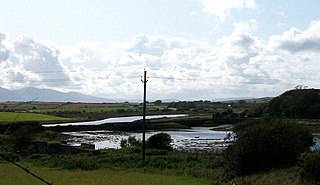
The Downpatrick, Killough and Ardglass Railway (DKALR) was an Irish gauge railway in Ireland linking Downpatrick with Ardglass. It was built from 1890 to 1892 and absorbed into the Ulster Transport Authority in 1948. It was closed on 16 January 1950.
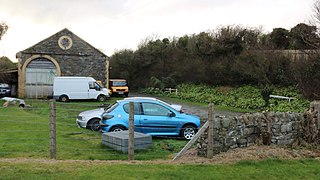
Killough railway station was on the Downpatrick, Killough and Ardglass Railway, which ran from Downpatrick to Ardglass in Northern Ireland.
Bright Halt railway station was on the Downpatrick, Killough and Ardglass Railway, which ran from Downpatrick to Ardglass in Northern Ireland.
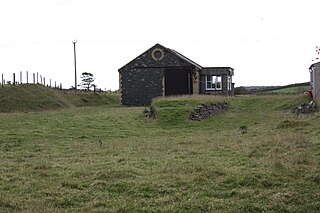
Ballynoe railway station was on the Downpatrick, Killough and Ardglass Railway, which ran from Downpatrick to Ardglass in Northern Ireland.
Downpatrick Racecourse Platform railway station was on the Downpatrick, Killough and Ardglass Railway, which ran from Downpatrick to Ardglass in Northern Ireland.

Downpatrick Loop Platform railway station is a junction station owned and operated by the Downpatrick and County Down Railway, heritage railway in Northern Ireland.

Queen's Quay railway station served the east of Belfast in Northern Ireland. It was formerly one of the three terminus railway stations in Belfast. The others were Great Victoria Street, and York Road.
Events from the year 1103 in Ireland.

Inch Abbey railway station is a station on the Downpatrick & County Down Railway, a heritage railway in Northern Ireland. It is the terminus of the railway's North Line and serves Inch Abbey, a ruined monastery and local tourist attraction of Downpatrick notable for its use as a filming location in the HBO show Game of Thrones.





